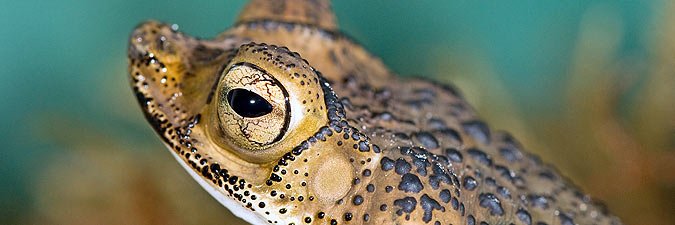Puerto Rican Crested Toad Captive Breeding
The Puerto Rican crested toad (Peltophryne lemur) is a threatened species found in southern Puerto Rico. In collaboration with the US Fish and Wildlife Service and the Association of Zoos and Aquariums (AZA) Species Survival Plan, tadpoles hatched at the Toronto Zoo are released in Puerto Rico each year for the purposes of sustaining and rebuilding the wild population. However, captive reproductive success remains erratic for unknown reasons. Our current objective is to determine the optimum husbandry protocol required to induce spermination, and thus ensure consistent reproductive success of this species in captivity.
Toronto Zoo has maintained an assurance population of this species since its re-discovery in 1984. Captive animals have provided a genetic resource to supplement wild populations and the breeding program has resulted in the re-introduction of over 125,000 tadpoles. A management program for the care and breeding of the Puerto Rican crested toad was also developed at the Toronto Zoo. It has been updated as an official AZA Husbandry Manual and also translated into Spanish. This captive management protocol covers various aspects of care for this threatened species and it guides over 20 institutions in the Species Survival Plan.

A complete historical studbook was completed as an International Studbook. This important document provided essential demographic and genetic data to the Species Survival Plan, which made breeding and transfer recommendations based on the age and relatedness of breeding pairs. Each year, studbook managers publish a studbook update on the AZA website.
In addition to the captive breeding program, Toronto Zoo also conducts research on Puerto Rican crested toad reproductive success. Different environmental conditions and hormone treatments are being tested and the males’ responses in terms of sperm production will also be assessed. We have tested the effects of different hormones and have found that human chorionic gonadotropin (HCG) has proven to be more effective in male sperm production than leutinizing hormone-releasing hormone (LHRH). Future studies will determine the impact of cooling on sperm production and compare HCG and LHRH in female toads.











